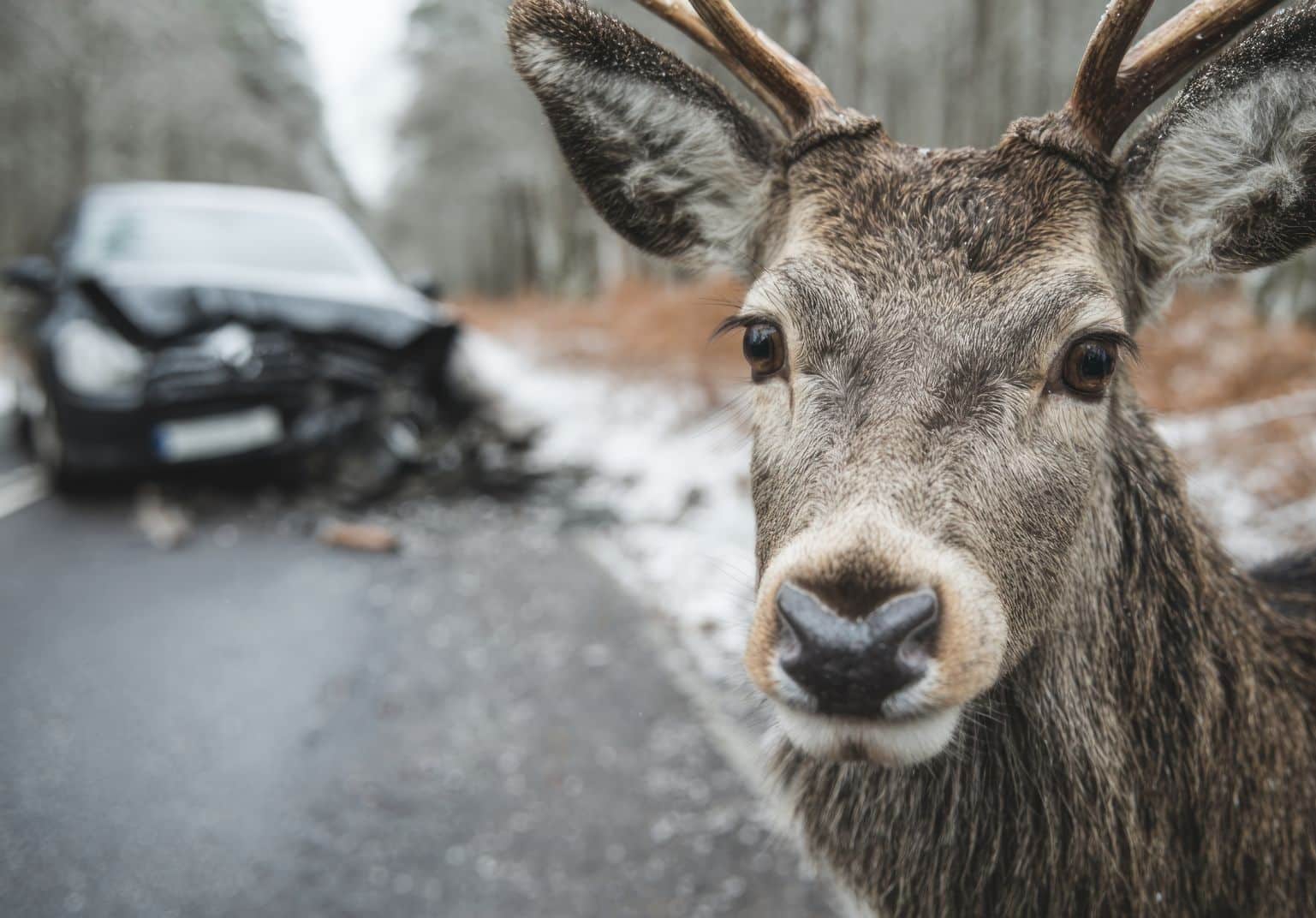 Deer collisions are a bigger concern than most drivers realize. According to recent insurance industry data, over 1.5 million deer-related crashes happen in the U.S. every year, causing thousands of injuries and millions of dollars in damages. With deer populations thriving in both rural and suburban areas, it’s more important than ever to know how to reduce your risk.
Deer collisions are a bigger concern than most drivers realize. According to recent insurance industry data, over 1.5 million deer-related crashes happen in the U.S. every year, causing thousands of injuries and millions of dollars in damages. With deer populations thriving in both rural and suburban areas, it’s more important than ever to know how to reduce your risk.
Whether you’re driving home from work, taking a weekend trip, or just running errands near wooded areas, these tips will help you stay safe on the road.
When Deer Are Most Active
Deer aren’t just a fall hazard anymore; they’re active year-round, but risk peaks during certain times.
- Dawn and dusk remain the most dangerous hours because deer are moving to and from feeding grounds when visibility is low.
- October through February is high season. Deer are most active during the fall mating season, and winter pushes them into new areas in search of food.
- Expect groups. If one deer crosses, slow down immediately; there are usually more following right behind.
How to Drive Defensively Around Deer
Even the most experienced driver can be surprised by a sudden leap into the road, but practicing defensive driving can make all the difference.
- Slow down in deer-prone zones. If you see deer crossing signs or you’re driving near fields or wooded edges, ease off the gas.
- Stay alert and scan. Keep your eyes moving and watch the sides of the road for movement.
- Use high beams wisely. When there’s no oncoming traffic, high beams can help you catch the reflection of deer eyes earlier.
- Don’t swerve. It’s natural to want to jerk the wheel, but swerving can send you into another vehicle, a tree, or a ditch. Brake firmly and stay in your lane.
- Tap your horn. A long honk can scare deer into backing away from the road.
Modern Tools That Can Help
Technology is making it easier for drivers to avoid collisions:
- Collision-avoidance systems in newer vehicles can automatically brake if an animal is detected.
- Thermal or night-vision systems (in some vehicles or as aftermarket add-ons) can spot animals even before your headlights do.
- Wildlife-collision maps and apps now highlight high-risk roads so you can be extra alert in trouble zones.
If You Hit a Deer
Even with the best precautions, accidents happen. If you hit a deer:
- Pull over safely and turn on your hazard lights.
- Stay in your vehicle. Injured deer can thrash and cause harm.
- Call local authorities. They’ll know how to handle the animal and document the crash.
- Take photos for your insurance company.
- Get your car inspected. Even if the damage looks minor, deer collisions can affect your suspension, frame, or cooling systems.
Keeping You Safe After a Collision
At Tommy’s Automotive, we’ve seen our share of deer-related repair jobs, from dented fenders to major front-end damage. If you find yourself in this situation, our team is here to get your car back on the road quickly and safely.
Stay alert, stay prepared, and remember: while you can’t control wildlife, you can control how you react behind the wheel.
